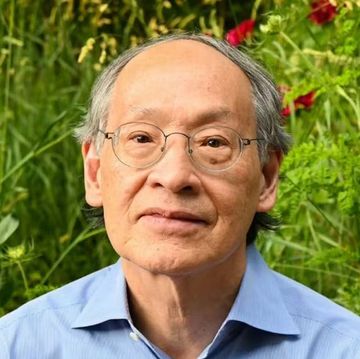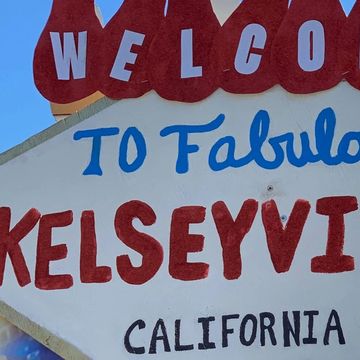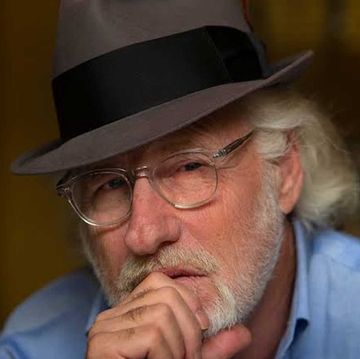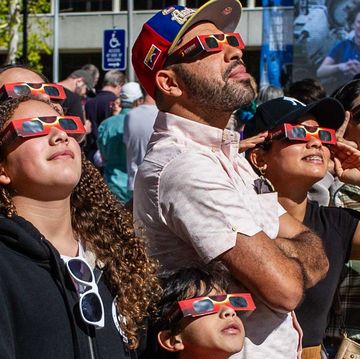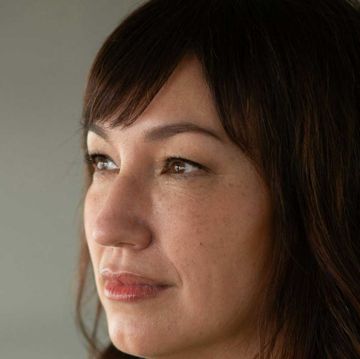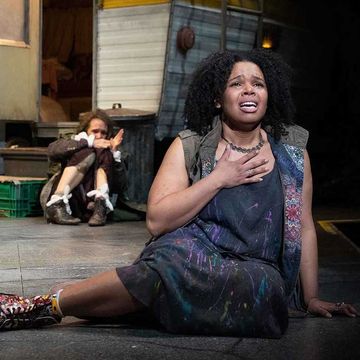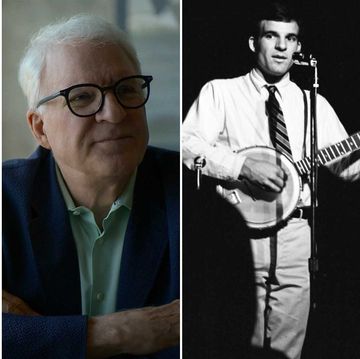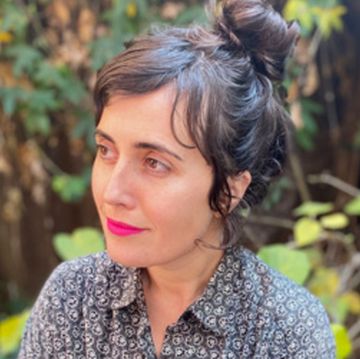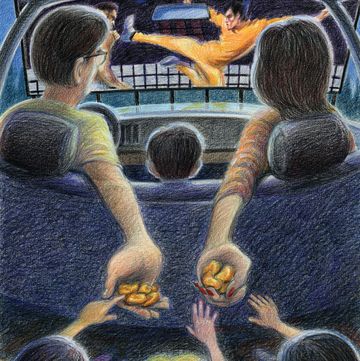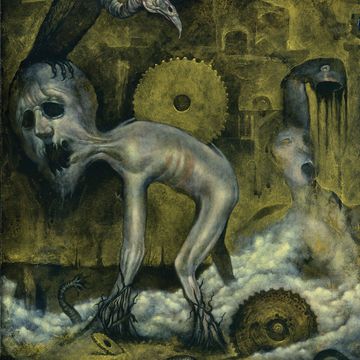Taiwanese American conceptual artist Lee Mingwei spends a lot of time on international flights, shuttling between the three cities he calls home—Paris, Taipei, and New York. He’s grown accustomed to being asked by strangers, So, what do you do?
“I have a very hard time answering,” Lee admits. “Usually, I’ll just say, ‘I’m an artist.’ But then the person will inevitably ask, ‘What kind of art?’ ”
I’ve been wanting to ask Lee that as well, because the more reading I did on his oeuvre, the more questions I had for this globally celebrated artist whose participatory projects defy easy categorization and whose favored medium is the social encounter itself.
This article appears in Issue 27 of Alta Journal.
SUBSCRIBE
Lee and I speak at the de Young Museum, in San Francisco’s Golden Gate Park, in early February during the installation of his first U.S. survey exhibition, Lee Mingwei: Rituals of Care. Seven of his most stirring projects, dating from 1995 to the present, will be on view there until July 7. One of them, a newly commissioned work titled Chaque souffle une danse (Each breath a dance), will be presented off-site at the Minnesota Street Project—in the city’s Dogpatch neighborhood—and then projected at the de Young on video.
We meet in the museum’s airy two-story atrium, where Lee’s massive (42 by 21 feet) re-creation of Pablo Picasso’s 1937 mural Guernica is nearly finished on a raised floor. Lee has remade the famous antiwar image—commemorating the fascist bombing of a Basque town—with colored sand in the spirit of a Tibetan mandala painting, left intentionally incomplete and bound for impermanence.
Just as when he first staged Guernica in Sand in 2006 at a London gallery, midway through the de Young exhibition (on March 23, from noon to sunset), Lee will personally finish the last small quadrant of the picture while visitors are invited to walk (ideally barefoot) one by one through the image, effacing and destroying it as he’s simultaneously completing it. Lee and a small group of dancers will then sweep the sand around a rock-shaped sculptural island at the work’s center, leaving it unrecognizable for the duration of the show.
“My goal is to draw attention to the creative power of transformation rather than to the pain caused by clinging to things as they are,” writes Lee in the exhibition’s catalog. It’s a fitting summation of his work’s grounding principles—sort of Joseph Beuys meets the Buddha—which wed centuries-old Zen thought with late-20th-century experiments in socially engaged performance art.
Lee and I walk together to the end of the museum’s second-floor American-art galleries, away from the noisy visiting school groups, and sit on a long wooden bench overlooking the sculpture garden. Now 60, he has a gentle, serene demeanor that’s punctuated with bursts of puckish laughter. He gets a mischievous twinkle in his eye and leans his slender frame a few inches closer to me as he winds up an anecdote about his airplane banter that he’s clearly told before but still relishes.
“If I’m feeling naughty, I will say, ‘I sleep with strangers,’ ” he says, starting to giggle. “ ‘As an art form.’ ”
Jokes aside, the truth is that Lee could tell his seatmates just as honestly, if cheekily, the following: He cooks for strangers. He mends strangers’ clothing. He gives strangers money. He gives strangers river stones. He asks strangers to handwrite personal letters. He even welcomes strangers to destroy his art.
Whether inviting people he’s never met to share a home-cooked meal (The Dining Project, 1997) or to write a letter to someone in their life disclosing previously unexpressed feelings (The Letter Writing Project, 1998, reprised at the de Young), Lee devises unexpected interactions between people that are meticulously planned yet remain delightfully open to chance. Strangers become artistic collaborators. The dichotomy between artist and participant is blurred.
“The essence of my practice is simple,” he says. “It’s based on the idea of hospitality and trust, particularly between strangers. When people come to my exhibitions, they get personally involved in my projects,” rather than passively admiring static objects. “Without your participation, my works are meaningless.”
Lee’s quip about sleeping with strangers refers to one of his earliest acclaimed works, The Sleeping Project (2000), in which he transformed a Manhattan gallery space into a bedroom with matching twin beds and nightstands and, every night for a month, invited one stranger to sleep beside him until morning. He asked each participant to bring a few familiar objects from their own bedroom—an alarm clock, a framed picture—and recorded their pre-bedtime conversations. He then left the recordings and the personal belongings in the space for others to examine during the remainder of the exhibition.
Like most of Lee’s projects, the idea was sparked by a personal memory. On a backpacking trip through Europe after his high school graduation, Lee shared a sleeper compartment on an overnight train from Paris to Prague with an elderly man who told him, during a lengthy conversation, that he was an Auschwitz survivor whose entire family had been killed in the concentration camp.
“After three hours, he hugged me and went to bed,” Lee recalls. “I stayed awake through the rest of the night, imagining how many people were taken to these camps on the same train tracks.”
Decades later, that seed of an idea would evolve into an extended inquiry into the unexpected (nonsexual) intimacy that can develop quite naturally between strangers—a hallmark of Lee’s work ever since. “Exchange, conversation, and gift-giving between strangers—these ideas have been meaningful to me for a long time and continue to this day and hopefully into the future,” he says.
Fabric of Healing
In Lee’s practice, ordinary gestures like eating, writing, or turning off a bedside lamp take on the aura of ritual when performed in exhibition spaces and heralded as art. Free of commercial concerns (almost 100 percent of his work is commissioned for museums, rather than collected), these emotional exchanges of ideas and memories between strangers can prompt a new understanding of how art can serve as a conduit for human connection and emotional solace.
Lee was born in Taichung, Taiwan, in 1964 and spent his childhood summers studying at a Chan Buddhist monastery in the mountains. As a young teenager, he was sent to a Catholic boarding school in the Bay Area, Woodside Priory in Portola Valley, which was founded by Hungarian monks fleeing Communism. “Maybe growing up in Taiwan and having an old-world European education gives me a complex sense of history,” says Lee, who speaks five languages and considers himself “tri-cultural.”
The de Young’s Rituals of Care is a Bay Area homecoming of sorts for Lee, who studied weaving and architecture as an undergraduate at San Francisco’s California College of the Arts (CCA). After graduation, he worked at a small textile firm in South San Francisco but soon grew bored and pivoted toward something more unusual and ephemeral.
“I don’t think it’s a coincidence that both textiles and interactive performance play such an important role in his work, because both are the great legacies of Bay Area arts,” says Claudia Schmuckli, the curator-in-charge of contemporary art and programming for the Fine Arts Museums of San Francisco, which includes the de Young. She’s known Lee and his work for 25 years. “He’s been profoundly impacted by the kinds of artistic practices that are a hallmark of this region and set it apart.”
Lee traces his realization that his art practice would be conceptual and noncommercial, and thus different from that of most of his art school peers, to a pivotal 1994 conversation with his undergraduate mentor, Suzanne Lacy, a pioneer in socially engaged performance art. She was the dean of fine arts at CCA (then California College of Arts and Crafts), and Lee consulted her as he was preparing a portfolio of work to apply to MFA programs.
“I showed her the slides of my weavings, and she said they were lovely but not conceptually strong enough for top graduate schools,” Lee recalls. “At the time, I was heartbroken, but it hit the nail right on the head.” She told Lee to spend a whole year doing projects solely for himself and not for any other purpose or goal, and only then to use the results as his proposal.
The product of his year of introspection, 100 Days with Lily (1995), the earliest project in the de Young show, not only helped earn Lee a spot in Yale’s prestigious MFA program but also is now seen as “foundational to understanding his expansive practice,” says Schmuckli. “The emphasis of the works throughout the exhibition is his idea of healing [being] embedded in social connectivity and thinking about how his work helps us to process loss and trauma.”
Created in memory of his beloved maternal grandmother, who died in 1982, and influenced by performances by experimental artists Beuys, Yoko Ono, and Rirkrit Tiravanija, Lily consisted of Lee carrying a potted flowering plant with him 24-7 for 100 days “to experience its stages of germination, blooming, and withering.”
Large-format photographs of the artist engaged in mundane activities are overlaid with a hundred lines of text about his daily routine (“Napping with Lily,” “Reading with Lily,” “Cooking with Lily,” “Walking with Lily,” etc.). It’s one of his few works that can be exhibited in a traditional, framed format after its performance.
Lee says the Lily project cemented his commitment to conceptual art, but it also led him to realize that his personal installations would be gentler, less confrontational, than those of contemporaries in durational performance like Tehching Hsieh (who famously locked himself in a cage in his studio for a year) or the world-renowned Marina Abramović, who spent nearly three months seated on a wooden chair inside the Museum of Modern Art, staring at people seated across from her for up to 10 hours a day.
“Marina’s work is about endurance and the limitations of what you as a person can do and what society can accept,” Lee explains. “Whereas for me, it’s definitely not about endurance. I think after the third day of carrying the plant, I knew this was definitely not what I wanted to do!” he adds, laughing. Abramović helped “pave the way for me, but now I do my work in a much more peaceful frame of mind.”
The more we talk, the more I realize the extent to which the “art” Lee creates can in some cases be seen as an elaborate pretext for eliciting what he calls the simple “gift of intimate conversation between strangers.” While a cynic might say that a good-hearted bartender can achieve the same collegiality and intimate sharing by serving a pint to a stranger, the stories Lee has accumulated are indeed remarkable.
His Mending Project (2009), a major work at the de Young, requiring 60 volunteers during the course of the exhibition, invites visitors to bring in a torn garment and sit and converse with the artist or one of his proxies while they ornamentally mend it with colorful thread.
This project was also inspired by a potent childhood memory. “When I was a child in Taiwan, every village had a temple in its plaza and often a big banyan tree,” Lee says. “I remember during spring and autumn, a young woman would always arrive in her red kimono, and on the back of her bicycle, she’d have a sewing kit for mending and her cat. And she’d just wait there under the tree for anyone who needed mending. What really touched me is that she always folded the clothes she had mended with such care and handed them back with both hands. That was so beautiful.”
“It can be extremely intimate when someone brings their second skin for you to repair,” says Lee. “Being the mender is incredibly healing for me, personally, because of the beautiful stories people share. The conversations I’ve had with people while I was doing the mending have been so powerful.”
He recalls an unforgettable young woman who brought him a blue coat to repair at the 2017 Venice Biennale. “She had a very heavy German accent, and she had blond hair and dark brown skin, with one blue eye and one black,” he says. “Just completely striking. And when I was mending, she told me she was born in the Amazon River basin, and when she was very young, her tribe put her in a basket on the river because she was considered evil. The basket took her down the river, and there was a young German couple who received the basket, just like Moses, and they became her adoptive parents. Her adoptive mother gave her the coat on her 20th birthday. She was so emotional, she just started crying…saying, ‘I wish it was my biological mother who was doing the mending for me.’ ”
The Strain of Not Knowing
Lee says that unexpected moments and revelations that arise when people engage with his work create its necessary “tension”—a word he uses frequently when explaining his practice.
“There must be tension in my project. It’s really the spirit of all my work,” he said during an October 2022 lecture at San Francisco’s Grace Cathedral, where he spent a year as artist in residence. “Without this thing called tension, my work would seem just like a pretty thing. There’s nothing wrong with beautiful things…but as a creative person, I need to have something that is slightly unsettling.”
“For example, Guernica in Sand is quite beautiful, isn’t it?” he tells me. “When you see the actual sand painting, it’s quite stunning, and for some artists that might be enough, but for me that is only 50 percent of the work. Once you know it is going to be destroyed by someone stepping onto it, that is where the transformation and uncertainty come in, which I think is quite important in all my work.”
With its surprising mixture of playfulness and earnest inquiry into impermanence, healing, and social connectivity, Lee’s work, even within the little-understood world of experiential art, “is quite unusual,” he acknowledges. “There are probably only about 20 or less people in the world like myself who do this kind of work under the rubric of performance.”
It goes by many names in the art world and among scholars and curators—performance art, social aesthetics, relational aesthetics, social conceptualism, new genre public art. “It’s even hard for me to categorize,” he says.
Lee’s gentle irreverence is disarming, perhaps because I didn’t expect such a seriously contemplative artist to exude such delight in his projects, but he exclaims that “there’s joy, a lot of joy” in making his art.
“I hope that my work can bring more questions to people’s minds than answers, so when they leave this show, hopefully they are a slightly different person. Some people might come in and say, ‘I don’t know what’s going on.’ But that’s fine. That’s perfect! That’s what contemporary art does to people.”•








